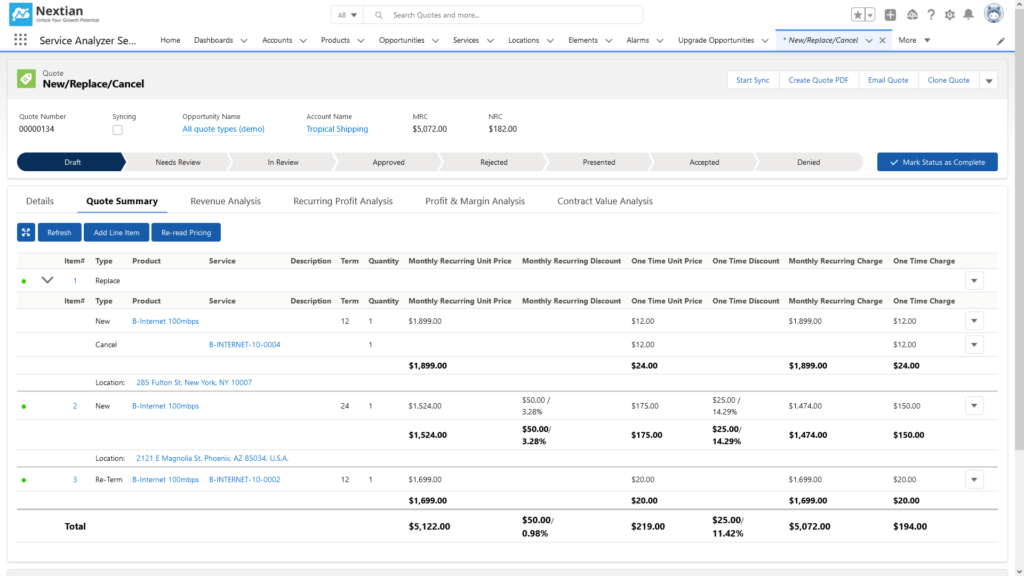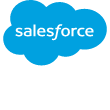2024 telecommunications industry trends in quote-to-cash

2024 telecommunications industry trends clearly show that the telecommunications industry is at a juncture.
Keeping high sales velocity and driving customer lifetime value by providing a seamless, automated quote-to-cash experience, high uptimes and best-in-class customer support is a challenge for many providers.
Building an effective quote-to-cash process is difficult under normal circumstances, but is becoming even more complicated in 2024 due to changes in technology and the following industry trends:
- Focus shift from network to software both on the back-office (automation, digital experience, multi-channel customer communication) as well as products (SD-WAN, other “software” products).
- Improving customer digital experience (new product purchases, service changes, enabling self-service analytics).
- Automation shortening delivery cycles and enabling cost reductions.
- Open APIs enabling seamless engagement with external ecosystems.
- Operationalizing AI & algorithms in multiple areas such as support (proactive problem detection, automated network recovery, case routing to best qualified technicians), sales (automated upsell and cross-sell opportunities) and customer communications.
Providers who cannot address these challenges are likely to face the following difficulties:
- Keeping pace with competition on the operational level (quote turnarounds, service delivery times, case resolution SLAs, etc.).
- Inability to turn the current systems/quote-to-cash into a revenue generation engine.
- Keeping products attractive for customers and resellers.
It is easy to notice that all the trends outlined above are almost exclusively related to software.
The traditional approach to OSS/BSS where individual systems are siloed (e.g., customer support, billing, order management, etc.) and integrated only to a limited degree makes developing APIs, building portals and operationalizing AI difficult.
This in turn, forces providers to re-think their OSS/BSS strategy.
OSS/BSS architecture
Typical OSS/BSS architecture challenges preventing communications providers from building an effective quote-to-cash include:
Siloed, disjointed systems where a complete, 360° account and service view can only be obtained by looking into and cross-referencing multiple systems like billing, network management, trouble ticketing and others.
No single pane of glass where back-office personnel such as sales, account managers, NOC technicians can easily query customer information across multiple systems, e.g.:
- An account manager would like to see account services, current orders, payments and open case history in a single, easily accessible place.
- A NOC manager would like to see if a customer pays the bills before prioritizing a ticket.
- A sales rep would like to know if an account has any services that are currently experiencing downtime, and if so, since when.
Individual system choices, making integration difficult. Some OSS/BSS systems just don’t play together well even when individually they meet business requirements.
Inefficient software development technology. For example, low-code platforms speed up development and allow rapid prototyping much faster than traditional programing languages like Java or C#.
Custom software not built on standard platforms (such as Salesforce or Microsoft Dynamics) cannot leverage standard features and add-ons provided for these platforms.
Building portals/providing digital experience for customers and partners requires integration/orchestration of many, disparate systems.
Data management and quality
Data plays a vital role in everyday operations as well as monetization. It is important for telco providers to look at the following aspects of data management:
No-nonsense data models enabling report building without complex data transformations.
Easy-to-use data points. Whenever possible, data points should be made available directly as fields in data models (as opposed to user- or ETL-calculated values) to simplify report generation and enable self-service analytics.
Enabling self-service analytics. Enabling back-office users to run queries and create their own reports, dashboards and list views is an easy way to boost productivity and drive better outcomes. This can be extended to some degree to partners & users in a variety of ways from simple dashboards and data exports all the way to AI-assisted queries.
Ensuring data quality. Even with a good OSS/BSS stack and data models, poor data quality can cause a lot of problems. APIs and automation will fail and cause processing errors when running into incomplete / bad data.
API-fication
API-fication is one of the telecommunications industry trends that has been around for a while.
It was initially conceived as a means of enabling communications among internal applications (“get applications to talk to each other”).
Instead of looking at business processes and tasks in isolation, a well-executed API-fication streamlines execution across the entire organization.
Open APIs take API-fication to the next level connecting businesses with customers, partners, vendors and other third-parties.
For telecommunications providers, open APIs are typically available for ticketing & support, service inventory & status, order management and others, effectively moving providers closer to “as a service” business model.
Telecommunications industry trends for sales
Communications providers continue to make improvements in the sales process:
Quoting automation. Rapid creation, approval & signing of complex quotes with multiple items helps drive sales velocity while reducing errors at the same time.
Multi-channel sales. Quoting and accepting orders via multiple sales channels such as APIs, customer portals, partner portals and individual reps drives volumes and shortens sales-cycles.
MACD (Move, Add, Change, Disconnect) support. Ability to create quotes including not only new services, but also changes such as new service add-ons, upgrades, moves and others, streamlines sales as the quote/order/delivery process remains the same regardless of order type.
Third party sourcing & pricing. Telecommunications resellers and wholesalers source products from many vendors with vendor-specific pricing. In addition, a product from a single vendor may have different pricing based on location or other factors. Integrating & automating third-party sourcing and pricing into a seamless CPQ process significantly shortens quote preparation time.
Easy handling of complex products. Some products such as voice, UCaaS or Wi-Fi access for large office or residential buildings require many components and moving parts scaling up to hundreds of items on a single quote. Efficient and accurate building of complex quotes not only shortens sales cycles, but also prevents errors down the line in service delivery.

Order management and service delivery for telecom
The following continue to be an area for improvement for providers as far as order management and service delivery are concerned:
Automated ordering process. Automated order creation from a quote upon receiving customer signature and kicking-off its processing ensures that no order is lost. This may entail manual order validation for complex products, or auto-validation immediately triggering service delivery for simple ones.
Service delivery task automation. Automating as many tasks as possible and reducing the number of manual order touches drive efficiency. Since various products (and possibly vendors) may have different delivery workflows and tasks, automated matching of order type to an appropriate delivery workflow is essential.
Intelligent work routing and task assignments. Managing hundreds or even thousands of manual tasks ready for assignment and execution (spanning multiple orders, order types, products, underlying vendors) can be daunting for service delivery managers. This can be mitigated by using intelligent routing engines with availability- and skills-based matching.
Automated delivery status reporting & forecasting. Preparing status reports and establishing service projected installation dates (PIDs) can be a time-consuming activity, especially for providers with large volumes of smaller orders such as broadband Internet. Automating PID calculations drives efficiency and forecasting accuracy.
Effective customer communication. Effective communication via portals and emails (internally as well as with customers and partners) is essential to ensure seamless delivery and high CSAT (Customer Satisfaction) scores. It is especially important for large multi-site, multi-service orders. Ideally, communication should be both ways, i.e., allowing customers to both consume and enter data (e.g., additional information, missing paperwork, etc.).
Telecommunications industry trends for customer support
Providers continuously improve customer support to retain high CSAT scores with:
Omni-channel support. Customers need to be able to submit tickets and receive notifications via web portal, mobile app, email, and phone. All channels should share a single underlying database (“single source of truth”) and be interchangeable.
Proactive incident management. Providers need not only be reactive but also proactively communicate with customers in regard to current outages, service performance, maintenance windows and potential future issues (e.g., disk space almost used up).
Third-party ticket bonding. For example, a SQL database service may be hosted in AWS, rely on power from a power company and require a stable Internet connection. If a vendor-provided element is experiencing issues, an internal ticket should be automatically opened and made accessible to the customer and a linked ticket should be submitted to the vendor.
Telecommunications industry trends for digital experience / self-service
Improving digital experience via portals (which remain the primary means of interaction between customers and providers post-sale), drives customer satisfaction and retention. Providers continue investing in portals to:
Empower customers with a 360° view of their services, orders, cases, payments, network status and insights.
Provide 24/7 customer support. Improve user experience, resolve issues faster and reduce phone calls and email overhead with on-line support channel.
Enable new product sales to create an additional revenue stream.
Self-management of product features. These typically include changes to license counts, adding more storage or computing power, larger IP blocks, enabling QoS and others.
Automated renewals. Automating renewal process via self-service helps securing revenue as well as shortens renewal cycles.

Monetizing telecommunications data: upselling and cross-selling
In 2024 providers continue to struggle with monetizing service information as plain selling of more services does not ensure continued growth.
Once sales reps close a deal and a service is up and running, account managers usually have limited visibility into service performance and potential upsell and cross sell-opportunities.
Network monitoring combined with AI and algorithms can be leveraged to automatically detect up sales and cross-sales opportunities driving revenue as well as customer loyalty.

Summary
In 2024, the communications industry continues shifting focus towards software to keep high sales velocity and drive customer lifetime value.
The following factors drive the shift:
- Increased role of software products such as SD-WAN, SD-Security, SaaS, PaaS and others.
- Improving customer digital experience (new product purchases, service changes, enabling self-service analytics).
- Automation shortening delivery cycles and enabling cost reductions.
- Open APIs enabling seamless engagement with external ecosystems.
- Operationalizing AI & algorithms internally (e.g., for intelligent task routing) and externally (e.g., for network monitoring & customer support).
About Nextian
Nextian offers software products and development services helping cloud & communications providers improve their quote-to-cash to drive revenue growth and customer base retention.
Contact us today to find out how we can help your business grow!
Related posts
Taking telco service delivery to the next level
Take your telco service delivery to the next level with task automation, intelligent task assignments, automated scheduling and forecasting and others.
Increasing sales velocity for cloud & communications services
Increase sales velocity of cloud and communications services and quickly generate revenue with rapid quoting, automated renewals and omni-channel sales.
Subscription service contract renewals for cloud & communications
Learn how to leverage Nextian for automated subscription service contract renewals with a high success rate and reduced month-to-month revenues.
GET THE NEXTIAN ADVANTAGE
We help enterprises increase revenue, profitability and gain efficiencies by realizing the full potential of the Salesforce platform.




